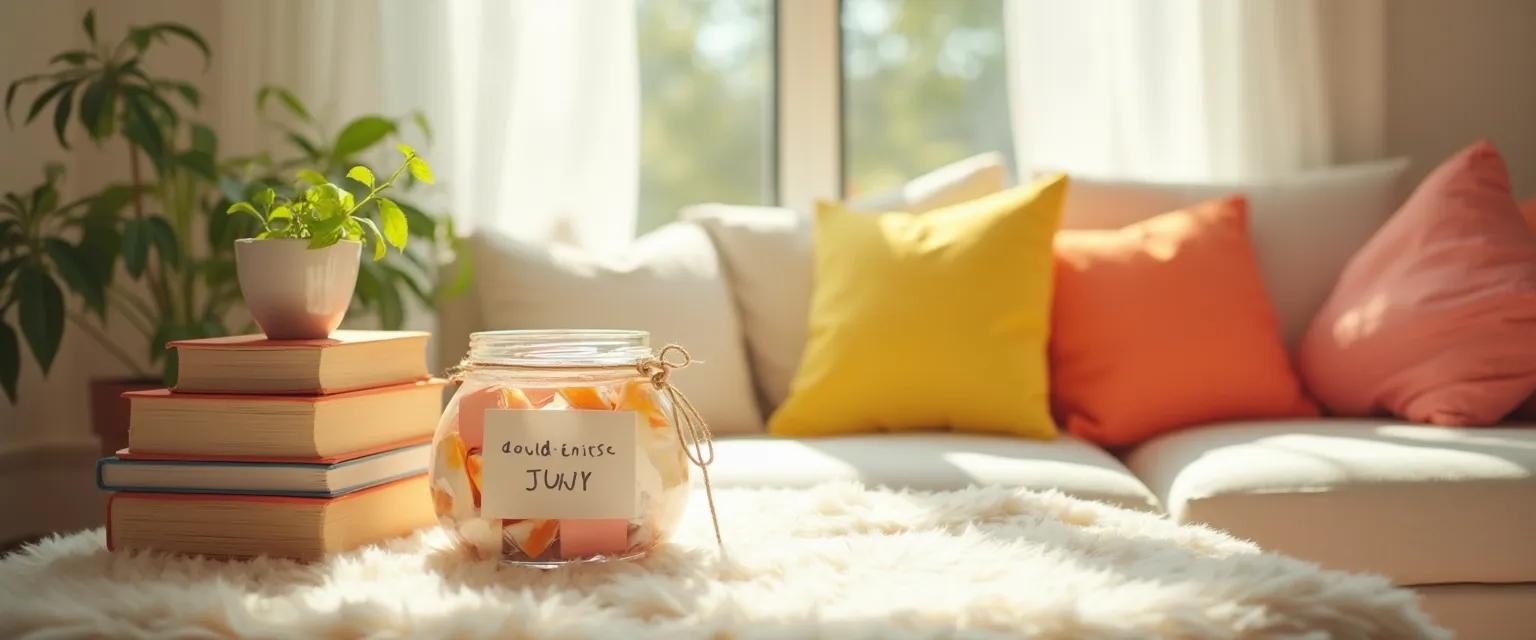Create Your Own Happiness Project with 7 Everyday Objects at Home
Ever noticed how certain objects around your home instantly boost your mood? That's not coincidence—it's the foundation of a personalized happiness project that can transform your everyday life. A happiness project isn't about buying fancy new items or completely overhauling your space. Instead, it's about intentionally using what you already have to create moments of joy, gratitude, and mindfulness throughout your day.
The science behind a successful happiness project is fascinating. Our brains form powerful associations with physical objects, and these items can serve as anchors for positive emotions. Research shows that visual reminders boost brain performance and can trigger the release of dopamine—the feel-good neurotransmitter that elevates your mood. The beauty of starting a happiness project at home is that you don't need special resources or extensive planning. You simply need to look at familiar objects with fresh eyes.
Ready to embark on your happiness project journey? Let's explore how everyday items can become powerful tools for emotional well-being, creating a more joyful home environment one small change at a time.
Essential Happiness Project Tools Using Items You Already Own
The most effective happiness project doesn't require shopping sprees—just creativity with what's already in your home. Start with a happiness jar: simply repurpose any clear container and place it somewhere visible. Each day, write a brief note about something positive that happened on a small piece of paper and add it to your jar. On difficult days, reading these notes provides an instant mood boost and reminds you of life's ongoing goodness.
Visual Happiness Triggers
Transform your walls into mood-elevating spaces with a strategic photo arrangement. Select images that spark joy, accomplishment, or peaceful memories. Unlike static decorations, a happiness project photo wall should evolve—swap photos seasonally or whenever you need fresh visual inspiration. Digital photo frames work wonderfully too, rotating through images that trigger positive emotions throughout the day.
Everyday objects can become powerful mood regulators when arranged with intention. A colorful mug designated as your "happiness project cup" can transform a routine coffee break into a mindful moment of appreciation. Even refrigerator magnets can become happiness project tools when they display meaningful quotes or remind you of personal values.
Sensory Happiness Elements
Your happiness project should engage all senses. Create simple sensory stations throughout your home using items like:
- A small bowl of fragrant items (cinnamon sticks, dried lavender, or coffee beans)
- A tactile stress reliever (smooth stones, fabric swatches, or a soft pillow)
- A dedicated playlist accessed through objects (like headphones kept in a special spot)
These sensory anchors become powerful happiness project elements that ground you during stressful moments and elevate ordinary experiences into opportunities for joy.
Integrating Your Happiness Project Into Daily Routines
The most successful happiness project becomes woven into your existing routines rather than feeling like another task. Morning rituals offer perfect opportunities to engage with your happiness project elements. Place a meaningful object by your bedside to touch first thing, or position your happiness jar where you'll see it while brewing coffee.
Morning Happiness Rituals
Transform your bathroom mirror into a happiness project focal point by adding a simple positive affirmation using a washable marker. This small action takes seconds but sets a positive tone for your entire day. Similarly, designating a special breakfast dish as your "gratitude plate" turns a routine meal into a moment of reflection.
Workspaces benefit tremendously from happiness project integration. A small plant, meaningful trinket, or confidence-boosting visual reminder can transform your productivity and emotional state during challenging tasks.
Evening Joy Practices
End-of-day happiness project rituals signal your brain to transition from work to relaxation. A specific candle, comfortable chair designated as your "reflection spot," or even a particular pair of socks can become powerful anchors for evening calm. The key is consistency—using the same objects creates stronger neural associations with positive emotions.
Measuring Success in Your Happiness Project Journey
Unlike many self-improvement efforts, a happiness project focuses on process over destination. Still, tracking your progress provides valuable insights. Use a simple rating system: each evening, score your day's overall mood from 1-10. After a month, review which happiness project elements corresponded with your highest-rated days.
Adjust your happiness project based on what delivers genuine joy. Some objects might lose their emotional impact over time, while others grow more meaningful. The flexibility to evolve is what makes a happiness project sustainable long-term.
Consider sharing your happiness project ideas with friends or family—teaching others about your process often strengthens your own commitment. As your happiness project evolves, you'll discover that the ordinary objects in your home contain extraordinary potential for joy. The most beautiful aspect of a happiness project is that it's entirely yours—customized to your unique preferences, memories, and needs.




